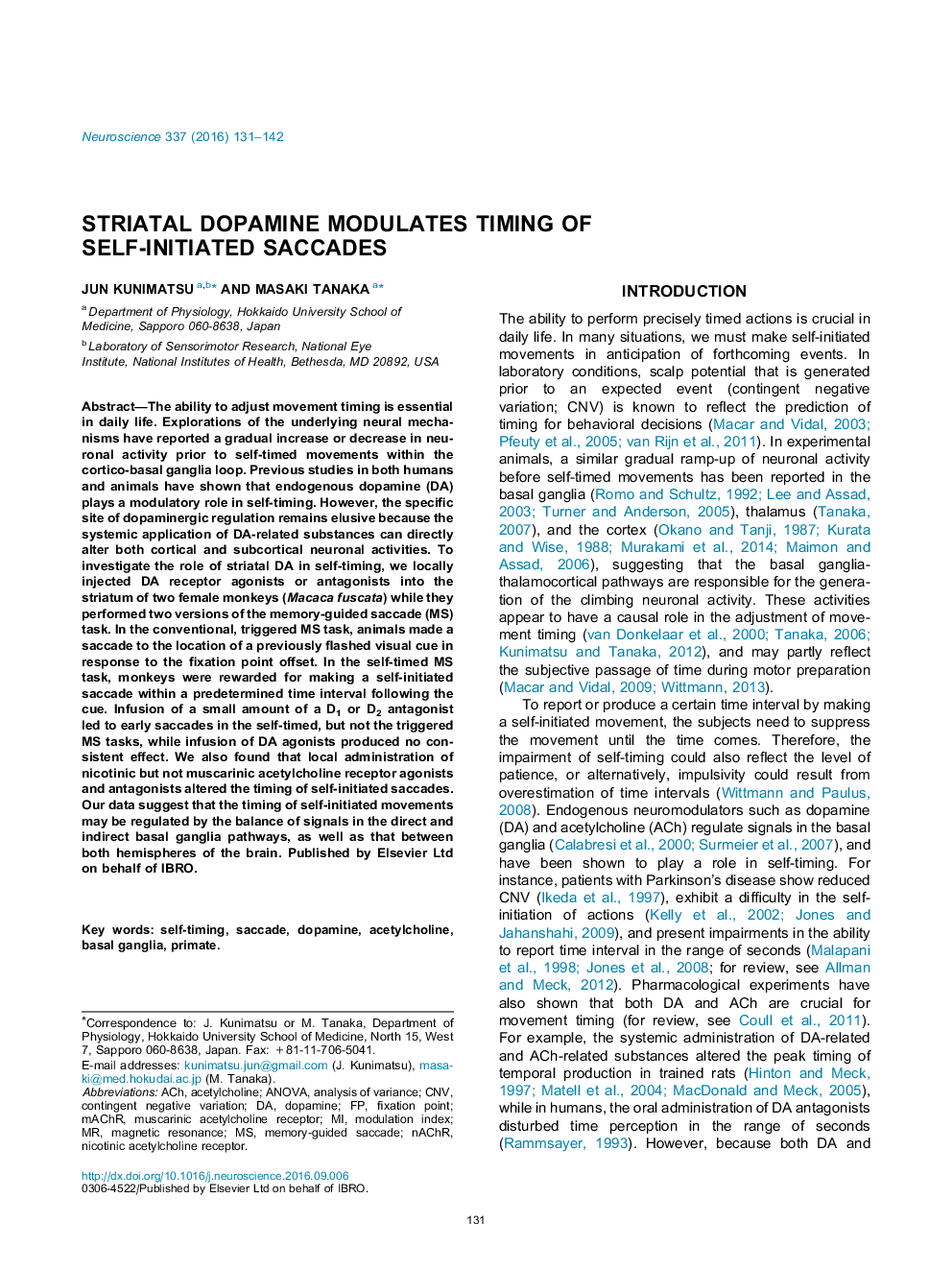| Article ID | Journal | Published Year | Pages | File Type |
|---|---|---|---|---|
| 6270753 | Neuroscience | 2016 | 12 Pages |
â¢Neurons in the caudate nucleus exhibited a gradual buildup of activity before self-timed saccades.â¢Local administration of dopamine receptor antagonists facilitated self-timed saccades.â¢Agonist and antagonist of nicotinic acetylcholine receptor also showed consistent effects.
The ability to adjust movement timing is essential in daily life. Explorations of the underlying neural mechanisms have reported a gradual increase or decrease in neuronal activity prior to self-timed movements within the cortico-basal ganglia loop. Previous studies in both humans and animals have shown that endogenous dopamine (DA) plays a modulatory role in self-timing. However, the specific site of dopaminergic regulation remains elusive because the systemic application of DA-related substances can directly alter both cortical and subcortical neuronal activities. To investigate the role of striatal DA in self-timing, we locally injected DA receptor agonists or antagonists into the striatum of two female monkeys (Macaca fuscata) while they performed two versions of the memory-guided saccade (MS) task. In the conventional, triggered MS task, animals made a saccade to the location of a previously flashed visual cue in response to the fixation point offset. In the self-timed MS task, monkeys were rewarded for making a self-initiated saccade within a predetermined time interval following the cue. Infusion of a small amount of a D1 or D2 antagonist led to early saccades in the self-timed, but not the triggered MS tasks, while infusion of DA agonists produced no consistent effect. We also found that local administration of nicotinic but not muscarinic acetylcholine receptor agonists and antagonists altered the timing of self-initiated saccades. Our data suggest that the timing of self-initiated movements may be regulated by the balance of signals in the direct and indirect basal ganglia pathways, as well as that between both hemispheres of the brain.
